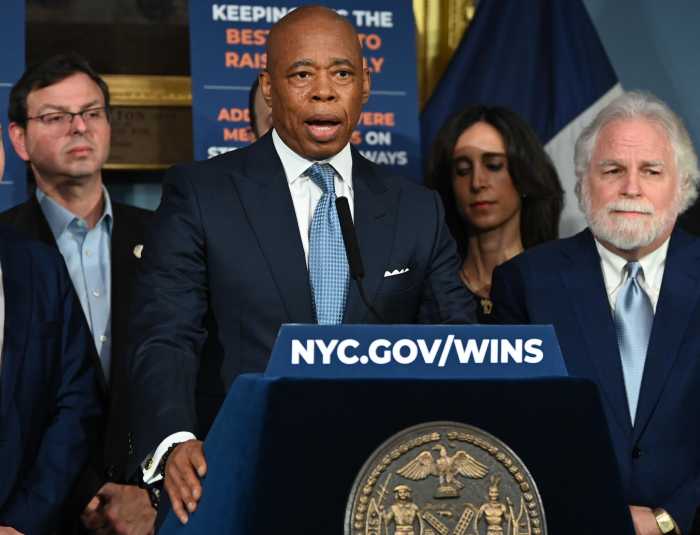New York City has never been at a loss when it comes to the media shining a spotlight on its liberal ideals, its ultimate acceptance of all cultures and its diversity in terms of its residents and their opinions. This last year, and this last week, is evidence of that fact.
First, there is the Occupy Wall Street protest that has lasted longer than anyone predicted. It represents the freedom to assemble, a principle that has formed part of the foundation on which our nation was built and continues to thrive.
Second, there is the symbolic opening of Park51, the Islamic Community Center that polarized both this city and the entire country a little over a year ago.
And finally, there is the debate that has occurred over a 12-foot-by-14-foot sukkah, or hut, that Chabad of Tribeca/Soho wanted to assemble in Tribeca’s Duane Park to commemorate the Jewish holiday of Sukkot. The holiday, which lasts seven days, recognizes the 40 years that the Jews spent trekking through the desert during their exodus from slavery in Egypt.
The last two examples have something in common. Lower Manhattan’s Community Board 1 (CB1) — while comprised of just 50 members — is charged with the duty of representing the community as a whole. CB1stepped into the midst of a thorny issue with a real potential of polarization, the separation of church and state.
While a ribbon was being cut last Wednesday evening to open a photo exhibition in the future home of Park51, an exhibition that represents exactly the type of programming we hope Park51 could offer, the other debate was brewing. On the surface, the Park51 debate and the issue of constructing a sukkah in a public park might seem incomparable. However, the two have much in common.
While many opponents of Park51 have been vocal about the construction of an Islamic community center so close to Ground Zero, the truth of the matter is that the building is privately owned. The owners are well within their right to put anything they would like that is legal and complies with city building and occupancy codes within the walls they purchased.
Similarly, when the rabbi of Chabad of Tribeca/Soho approached C.B. 1’s Tribeca Committee two weeks ago about the sukkah, concern immediately surfaced. Perhaps the proposal could possibly violate another principle our country’s founding fathers sought necessary to prominently place in the one document that our nation looks to in such an instance.
CB1chairperson Julie Menin realized this.
Instead of searching for a bigger park or a more accommodating public space, she chose to look for a privately owned, vacant lot where the sukkah might be constructed. That solution was well thought-out. The decision on what religious symbols or structures can be placed in public parks or public areas inevitably precipitates a series of “where to draw the line” questions. Best to avoid the appearance that governmental action indicates a preference for one religion over another.
Once again, we are inclined to support our local community board for taking a solution-based approach in dealing with a very sensitive issue.





































